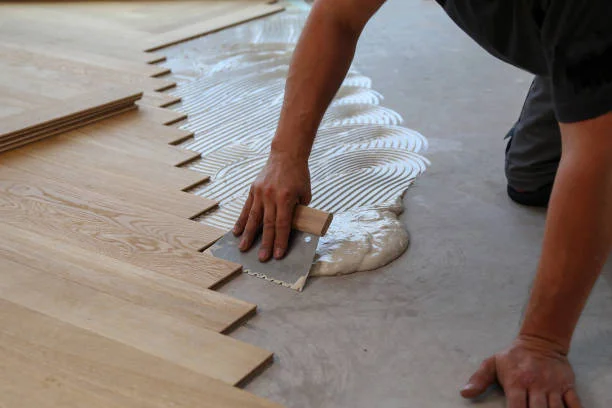The Basic Steps in Building a House
Basic Steps in Building a House, Here’s what to expect during the building process’ key stages. It’s thrilling to start planning your new house, especially after you understand how the process works.
It’s logical, says Chip Perschino, senior vice president of building at Edward Andrews Homes, that purchasers are eager to view their new house from beginning to end.
“From laying the foundation to framing and watching the building take shape, our homeowners enjoy watching the home come together,” he adds. “Once the drywall is up, people begin to see themselves living in the room and how they’ll utilize it, such as where they’ll put their furniture and how they’ll entertain friends and family.”
“They spend a lot of time customizing the house to make it unique to their family’s requirements and interests,” Perschino adds.
This page explains the usual procedures your builder will take throughout the building of a new house, as well as what happens at crucial phases, to help you plan for and understand your new home’s construction.
Keep in mind that the home building process might differ from one location to the next and from one builder to the next, especially if you’re building a custom home. Make sure to inquire about your builder’s unique regulations and processes.
“We welcome our homebuyers to come out and walk around the property with their realtor or project manager at any time,” Perschino adds. “We recommend that it be by appointment to alleviate some of the safety issues or limits that might arise while a house is being built.” It also allows us to provide a one-on-one interaction that is not possible via email.”
Read Also: Buying or Building a House? See Which Is Best
The Basic Steps in Building a House
1. Prepare the building site and pour the foundation.
Apply for and obtain permits.
Levels of Construction Crews Wooden forms are erected on the job site for the temporary foundation footings.
The local government must approve the design and provide permits for everything from zoning and grading (changing the contour of the land to suit your home and driveway) to septic systems, home building, electrical work, and plumbing before a builder can start digging. Physical construction can start when permits are obtained.
Site preparation and foundation work are usually done by the same team, but with a forested lot, this may not be the case. The team clears the site of rocks, trash, and trees for the home and, if appropriate, the septic system, using a backhoe and a bulldozer.
The crew prepares the site by leveling it, erecting wooden forms to act as a foundation pattern, and digging the holes and trenches. Footings (structures that connect the house to the soil that supports it) are put in place. At this stage, if your home will have a well, it will be dug.
The pit is dug, the footings are made and poured, and the foundation walls are formed and poured if the home has a full basement. If the foundation is slab-on-grade, the footings are dug, shaped, and poured; the space between them is leveled and equipped with utility lines (such as plumbing drains and electrical chases), and the slab is poured.
It will take time for the concrete to cure once it has been put into the holes and trenches. There will be no activity on the construction site during this time.
The team next applies a waterproofing membrane to the foundation walls, installs drains, sewer, and water taps, as well as any plumbing that has to go into the first-floor slab or basement floor, and backfills the hole surrounding the foundation wall with excavated soil.
1st inspection
After the curing process is completed, a city inspector inspects the site to ensure that all foundation components are up to code and correctly placed. Depending on the kind of foundation, this examination may need to be repeated (slab, crawl space, or basement). After that, your builder will remove the forms and start working on step two, the framing phase.
2. Rough framing for the floor system, walls, and roof systems has been completed.
Second, on the Steps in Building a House, Exterior Walls are sheathed and protected with protective wrap.
The floor, wall, and roof systems have all been completed (collectively known as the shell or skeleton of the house). The external walls and roof are sheathed with plywood or oriented strand board (OSB), and windows and exterior doors are added.
The sheathing is then wrapped in a protective barrier called a house wrap, which keeps liquid water out while allowing water vapor to escape. Mold and wood rot are less likely as a result of this.
3. Rough Plumbing, Electrical, and HVAC
The following items have been installed:
Pipes and Wire.
Vents and Sewer Lines
Lines of Water Supply
Shower Units and Bathtubs
Ductwork for a Heating and Air Conditioning System
HVAC Pipes for Venting
Siding and roofing can be placed once the shell is complete. Electrical and plumbing contractors begin putting pipes and cables through the inside walls, ceilings, and floors at the same time.
Sewer lines and vents are installed, as well as water supply lines for each fixture. Because there is greater room to handle huge, heavy things, bathtubs and one-piece shower/tub systems are installed at this phase.
The heating, ventilation, and air conditioning (HVAC) system, as well as the furnace, require ductwork. Insulation is put in the floors, walls, and ceilings, and HVAC vent pipes are inserted through the roof.
The home is termed “dried in” once the roof is installed. After that, an electrician installs the outlet, light, and switch receptacles and connects wires from the breaker panel to each receptacle. This project includes telephone, cable TV, and music system wiring.
Because it’s easier to run wires around pipes and ducts than vice versa, HVAC ducts and plumbing are generally built before wiring.
Read Also: Current Prices of Electrical Materials In Nigeria
4. Insulate the space
Insulation Types Used in New Homes
Mineral Wool Concrete Blocks Fiberglass Cellulose Foam
Concrete Forms for Insulation
Spray Foam Insulated Panels for Structural Use
Ridged Foam or Foam Board
Insulation helps to provide a more comfortable, constant indoor environment while also increasing a home’s energy efficiency.
The thermal performance, or R-value, of insulation, is one of the most significant characteristics since it reflects how well the material resists heat transmission. All external walls, as well as the attic and any floors above unfinished basements or crawl spaces, are insulated in most homes.
Fiberglass, cellulose, and foam are the most popular forms of insulation in new homes. sprayed foam, Mineral wool (also called rock wool or slag wool), insulating concrete forms (ICFs), concrete blocks, foam board or rigid foam, and structural insulated panels may also be used, depending on the area and environment (SIPs).
5. Finish drywall and inside fixtures, then begin outside finishing.
Drywall has been installed and the texturing has been completed with tape.
Paint is applied on the first coat.
The outside finishes (brick, stucco, and stone) are applied.
6. Install outside walkways and driveway doors, window sills, and decorative trim on the inside.
Cabinets, vanities, and fireplace mantles were installed. Applied the last coat of paint
7. Finish outside grading and install hard surface flooring and countertops.
8. Finish the mechanical trims and install the bathroom fixtures.
9. Finish the flooring and exterior landscaping; install mirrors and shower doors.
10. Final Walk-Through
This is the last of Steps in Building a House, here you’ll see things that need to be fixed or addressed!

![Cost Of Setting Foundation For A 3-Bedroom Flat ([year]) Cost Of Setting Foundation For A 3-Bedroom Flat](https://eucarlrealty.com/wp-content/uploads/2023/01/istockphoto-1158053848-612x612-1.webp)

![Top 10 Construction Companies in Lagos ([year]) Construction Companies in Lagos](https://eucarlrealty.com/wp-content/uploads/2022/11/Construction-Companies-in-Lagos.jpg)